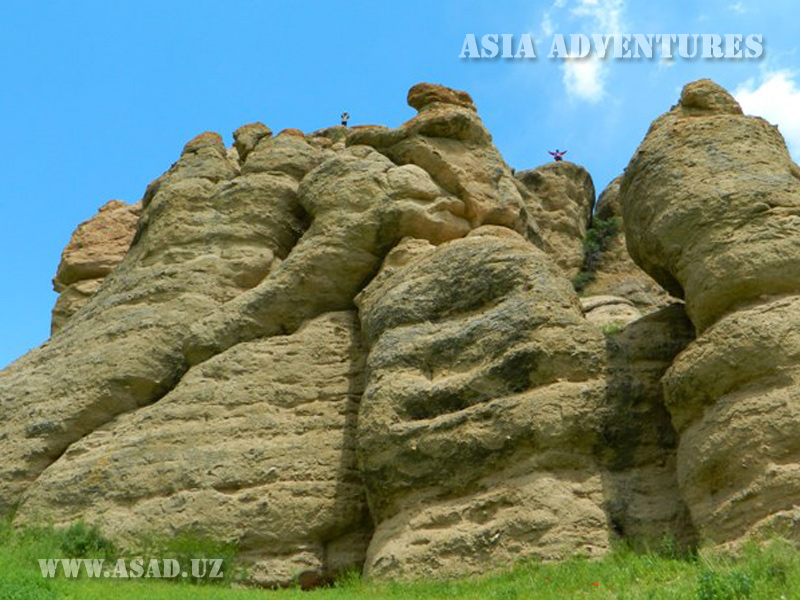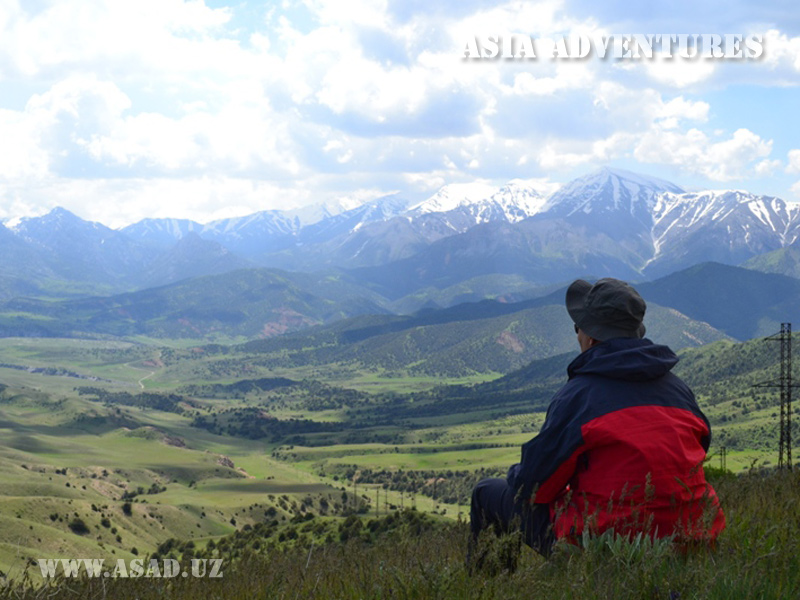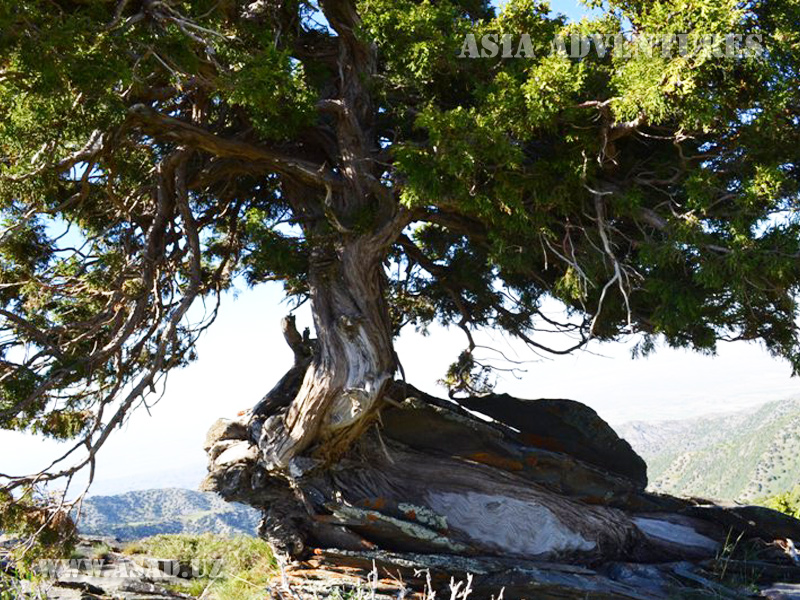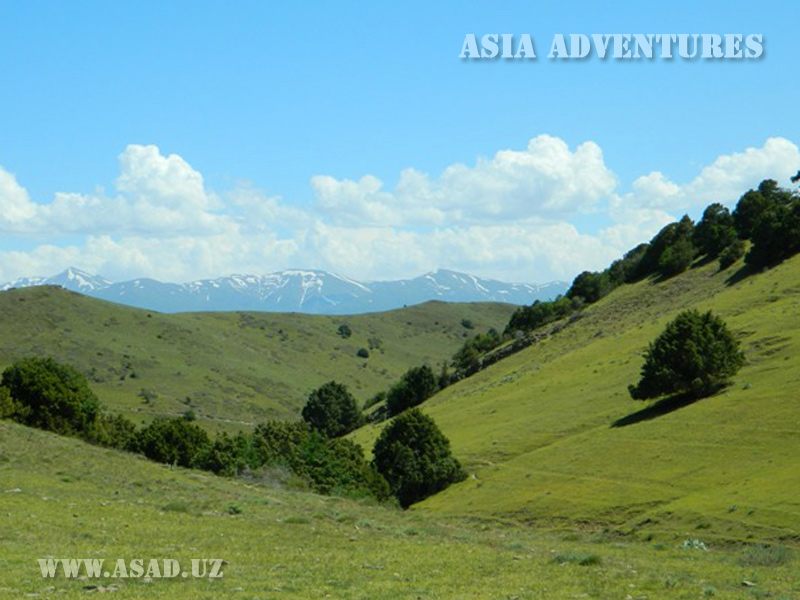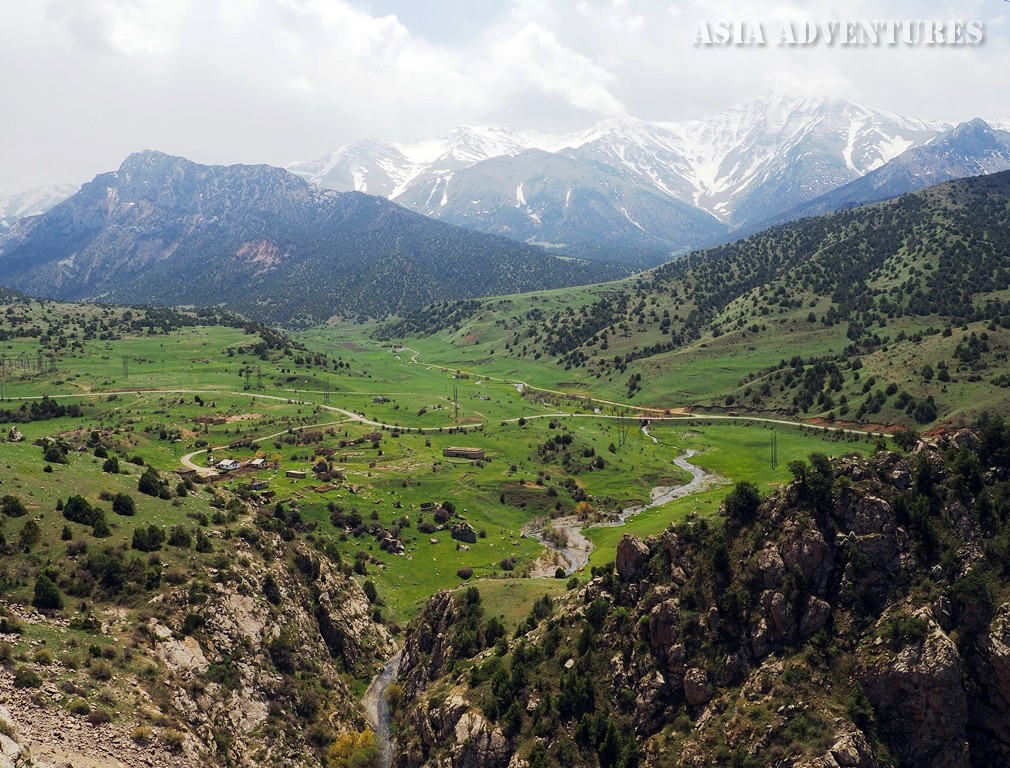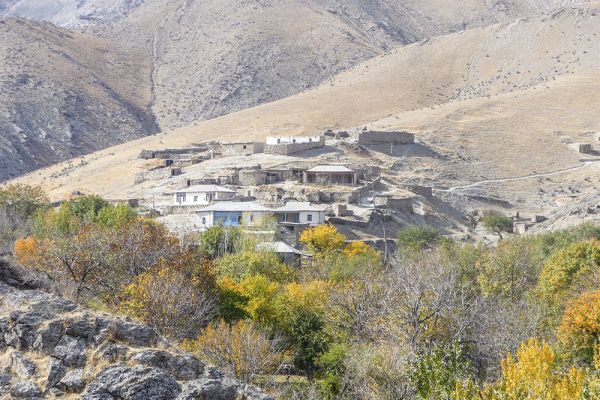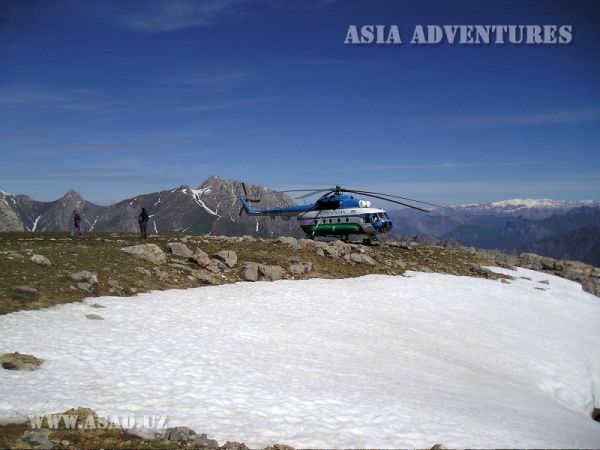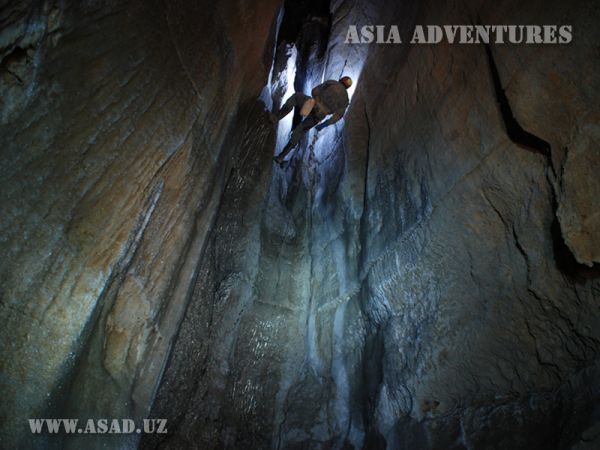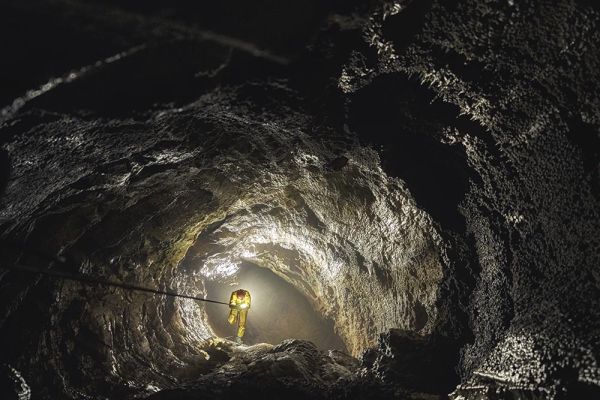Zaaminsky Mountain Juniper State Reserve
The Zaamin State Mountain Juniper Reserve (not to be confused with the namesake Zaamin National (National) Natural Park) is located on the northern slopes of the Turkestan Range in the Zaamin and Bakhmali districts of the Jizzakh region of the Republic of Uzbekistan.
The reserve was recreated in 1960 on the site of the Guralash Reserve (founded in 1928) and currently occupies an area of 26,840 hectares.
The territory of the reserve is a mountain range with a well-defined belt: the middle mountains and the highlands, located at altitudes of 1760 - 3500 m above sea level. The southern part of the reserve occupies the steep slopes of the Turkestan range, dissected by deep gorges; the northern part has a more smooth relief with terraces covered with a thick layer of marls and loess-like loams.
There are three vegetation zones on the territory of the reserve: mountain steppe, forest and highland (subalpine).
The belt of the mountain steppe is located at an altitude of 1300 to 2300 m above sea level. The forest belt begins at an altitude of 2100 m and ends at an altitude of 2700 m.
Three species of juniper grow together on the territory of the reserve: Zerafshan, hemispherical and Turkestan. Hemispherical juniper forms mixed stands in the upper part of the slopes with Turkestan juniper, and in the lower with Zerafshan juniper. The understory layer is represented by shrubs: Turkestan hawthorn, Fedchenko's rosehip, Korolkov's honeysuckle, oblong barberry, multi-flowered dogwood, Tienshan mountain ash is occasionally found among the rocks.
Currently, more than 700 species of higher vascular plants from 70 families and 280 genera have been identified in the reserve, of which 13 species are listed in the Red Book of the Republic of Uzbekistan, 48 species are endemic to the western part of the Turkestan range. The growth of 216 species of cap fungi, macromycetes, has been noted and studied.
More than 20 species of medicinal plants grow here: aconite, evergreen, immortelle and valerian, ziziphora, snakehead, etc.; more than 15 species of ornamental plants: veronica, carnation, primrose, tulips, eremuruses, crocuses, iris, delphinium, etc. In addition, there are dozens of economically valuable plants: resin-bearing, tanning, dyeing, essential oils, fruit and berry and fodder plants, which are valuable genetic resources.
In spring, the low-mountain area is indescribably beautiful, where ephemera and ephemeroids bloom - tulips, poppies, various types of onions and magnificent eremuruses.
Juniper, acantholymon, mosses and lichens grow mainly on the northern slopes of the subalpine zone - they have not been studied.
The wildlife of the reserve, which belongs to the Eastern Bukhara zoogeographic area, is very diverse. All the species typical of mountain juniper forests of nature reserves in general are represented here. A rich, natural food supply with various lands, places of shelters and nesting grounds ensure the existence of the entire complex of biodiversity.
The reserve is home to one species of fish, 2 species of amphibians, 14 species of reptiles, 102 species of birds, 30 species of mammals, of which are listed in the IUCN Red List.: snow leopard, Severtsov's ram and black vulture. The Red Book of the Republic of Uzbekistan includes: snow leopard, Tianshan brown bear, Turkestan lynx, Severtsov's ram, black vulture, black stork, bearded eagle, golden eagle, bald eagle, dwarf eagle, saker falcon, shahin.
Juniper zone is especially rich in birds. Common to the forests of the reserve are gall and mountain buntings, black-throated thrushes, juniper oak, gray mistletoe, keklik, a background bird and there are quite a lot of them, and Turkestan starling. Bluebird and black-headed remiz live in gorges with waterfalls, brown and common dippers, mountain and masked wagtails live near rocky shoals. Large birds of prey nest high on the rocks: white-headed barn owls, black vultures, and bearded lambs. In the Chortangi gorge, in the inaccessible, deep crevices of the rocks, one pair of black stork nests, arriving annually in Chortangi.
Of the mammals common here: wolf, wild boar, tolai hare, oriental blindfold. High in the mountains, in the juniper zone, you can meet a bear and cubs, they are not uncommon in the reserve, and in the wilderness you can hear the rustle of a lynx hiding and watching you from afar. Early in the morning, you can see a small, cute nocturnal weasel.
The mountain goat is an inhabitant of highlands, rock formations and scree, they are also common in the reserve, they willingly visit juniper and floodplain forests. There were also traces of a snow leopard ( 2-3 individuals) in the highlands.Turkestan agama is found on rocky outcrops, Pallas's cottonmouth, patterned snowshoe, desert goldfinch, yellowfin, etc. on sandy and clay slopes.
The climate in the reserve is sharply continental. According to long-term data, the average annual precipitation is 405 mm.
Snowfall in the high-altitude area is often observed in May and June. In January and February, the snow cover reaches a height of half a meter or more. High temperatures occur in July and August, with an absolute maximum of + 33 - 35 degrees, in December and January it drops to -34, spring frosts are observed until the end of May, early autumn frosts begin in September. Winter in the reserve is stable and lasts for more than five months.
There are 2 small rivers forming on the territory of the reserve - Guralashsai, which is one of the sources of the Sanzar River, and Kulsai, which forms the Zaamin River. Of the numerous tributaries of these sayas, the largest are the Julsai and Tuyuksai in the Kulsai basin, and the Angirei and Kyzyltorysai in the Guralash basin.
The length of the riverbed in the Guralashsaya Nature Reserve is 24.5 km, Kulsaya is 15.4 km.
